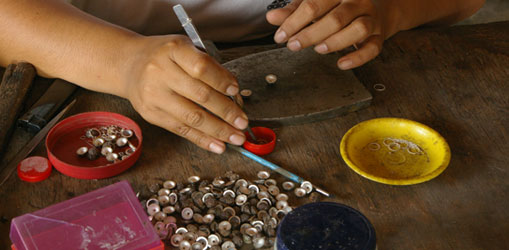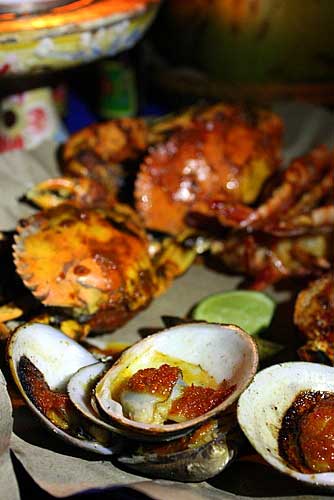Lontar is derived from rontal, which is composed of two Old Javanese word, ron and tal. Ron means leaf and tal means rontal tree, member of the palm family (Borassus flabellifer) which is also widely called siwalan tree. Rontal tree grows slowly compared to coconut tree. Rontal trees can easily be found in arid and tropical areas. Due to the shape of its leaves, spread like a fan, rontal tree is also called “fan tree”.
The making of lontar leaf paper – In order to produce lontar leaf paper, first of all suitable leaves must be collected, ideally those of approximately 25 cm of length. The leaves are dried for one day, after which the rib of the leaves are cut out. Then the leaves are soaked with water during a length of three days, in order to remove the chlorofyl. The next step is to clean the leaves with a brush of coconut fibre, to remove dirt and the eggs of insects. After the cleaning the leaves are dried again for one day. Then the leaves are steamed above boiling water mixed with liligundi leaves and gambir (uncaria), in order to give the lontar their subtle yellowish-red color. Then the leaves are dried again. In order to prevent the leaves from wrinkling and being hard to flatten, the drying process is done slowly and in a damp place. As soon as the leaves are supple they are piled up one by one and flattened with a specially therefore designed press. An already completed lontar is used to define the correct lenghth, and then a cempurit (a special perforating device) is used to perforate the leaves in three designated places. Finally each lontar leaf is bound and pressed tighter with the use of screws, their edges are refined with a plane and the tips are cut to make them precisely even. Kincu or paint is used to color the lontar in red, after which the lontar are kept for six months before they are ready for inscriptions.
Inscription tools – Lontar are inscribed with a special tool called pengerupak. It is made of iron, with its tip sharpened in a trangular shape so it can make both thick and thin inscriptions. There are two types of pengerupak, one for writing and one for drawing. The pengerupak for writing is approxemately 15 in length and 1.5 cm wide, the pengerupak for drawing has the same length but is only 0.5 – 1 cm wide. There also is a third, longer type which is used for the cutting of rontar leaves.







2 thoughts on “Lontar – Balinese Palm Leaf Manuscripts”
Hi,
Can I find out if we were to invite you to come and help us make names for our guests at a function in Bali this coming June, how do you charge? There will be approx 150 guests
Think it would be great experience for them to have their names written on the leaves.
Many thanks and hope to hear from you soon.
Febri
Hi, just for your information I’m not the writer of the Palm Leaf. Need to go to a Special area name Tenganan Village for the people can write at the Palm Leaf. Take about 2 hours drive from Kuta area to that village. Tq